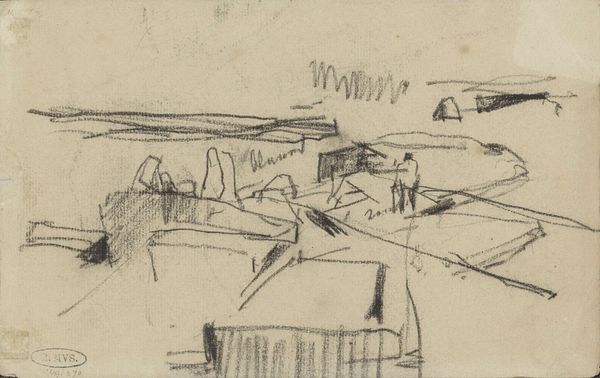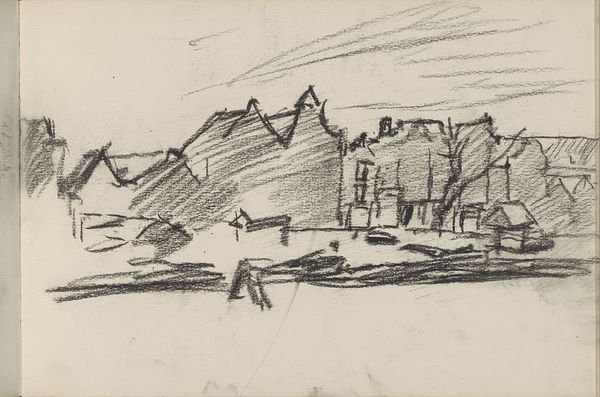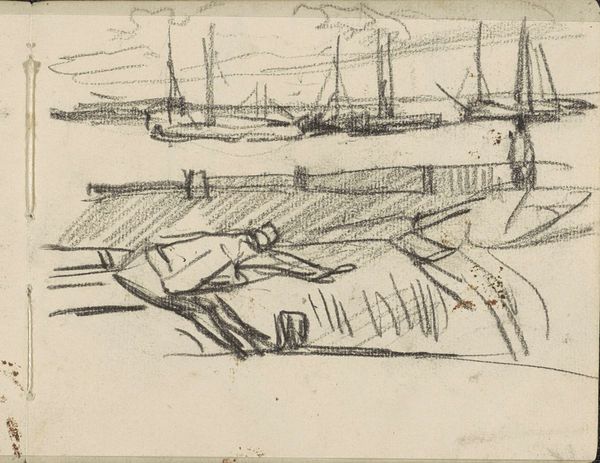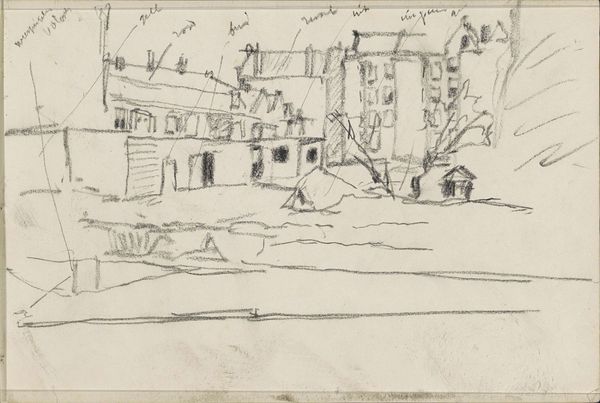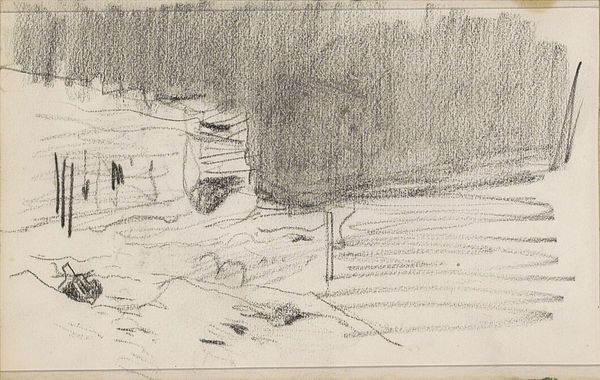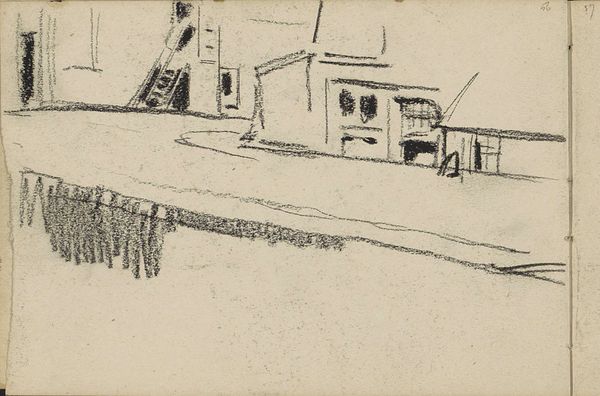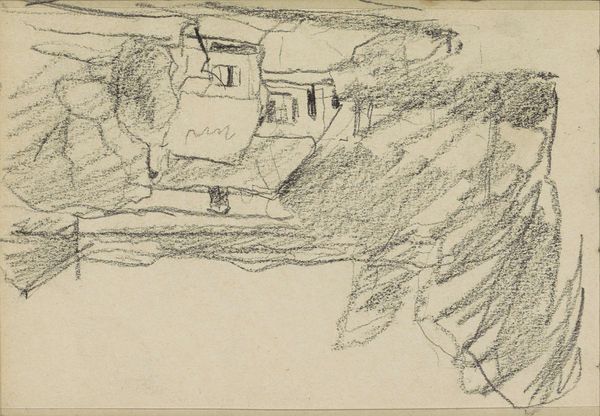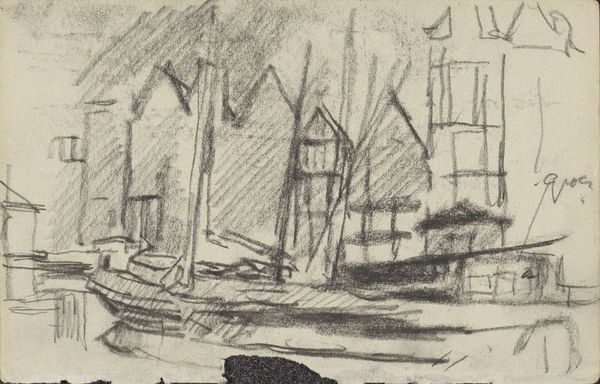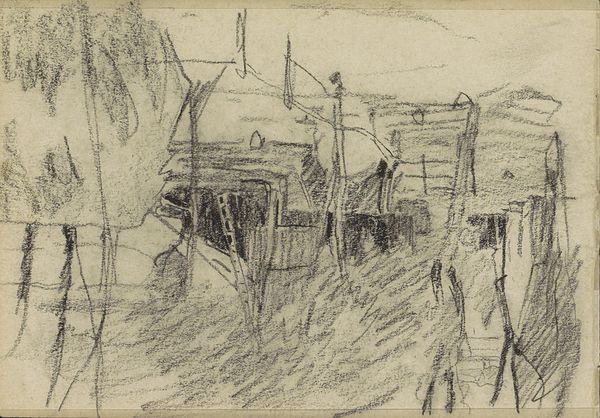
Dimensions: height 116 mm, width 195 mm
Copyright: Rijks Museum: Open Domain
Curator: Before us is "Gezicht in Amsterdam met een schip," or "View in Amsterdam with a Ship," a drawing by George Hendrik Breitner, dating back to around 1912. It's part of the Rijksmuseum's collection. Editor: It strikes me as remarkably casual, almost fleeting. A quick sketch, capturing a momentary impression. The rough lines, the bare minimum of detail – it's like catching a glimpse of something out of the corner of your eye. Curator: Indeed. It appears to be made using pencil, possibly as a preparatory sketch. Note the suggestive lines capturing form and movement, while also implying that what is absent is equally vital for context and understanding of Amsterdam's historical relationship to waterways. Editor: The sketchy style reinforces that sense of immediacy. Notice how the shading above almost seems like a storm is gathering, a psychological counterpoint to the grounded solidity of the buildings and boats depicted. Curator: Perhaps that contrast embodies Amsterdam's historical relationship with both opportunity and struggle. Boats were indispensable not only to transport trade from other cultures, but could represent how outside dangers or opportunities affected life in the city. Editor: Do you think that this artwork would elicit a shared feeling in individuals across varying ages? Perhaps there's something fundamentally universal about seeing these bare architectural forms—an almost archetypal experience of a cityscape in a sketchbook that resonates beyond cultural contexts? Curator: I believe there are layers of personal and historical experiences to be perceived within it, so what one person gleans may or may not transfer over to the next, but its beauty and rough quality seem to evoke thought and interpretation across time. Editor: Yes, and it’s precisely this inherent ambiguity, I think, that keeps one visually exploring. The sketch's unfinished nature becomes an invitation for the viewer to actively participate. Curator: Agreed, it’s a remarkable capturing of a moment, simultaneously fixed in time and perpetually open to interpretation through its intentional gaps of information. Editor: This piece highlights the power of suggestion over explicit representation. I appreciate experiencing the bones of this image that has as much to do with suggestion as explicit rendering.
Comments
No comments
Be the first to comment and join the conversation on the ultimate creative platform.
